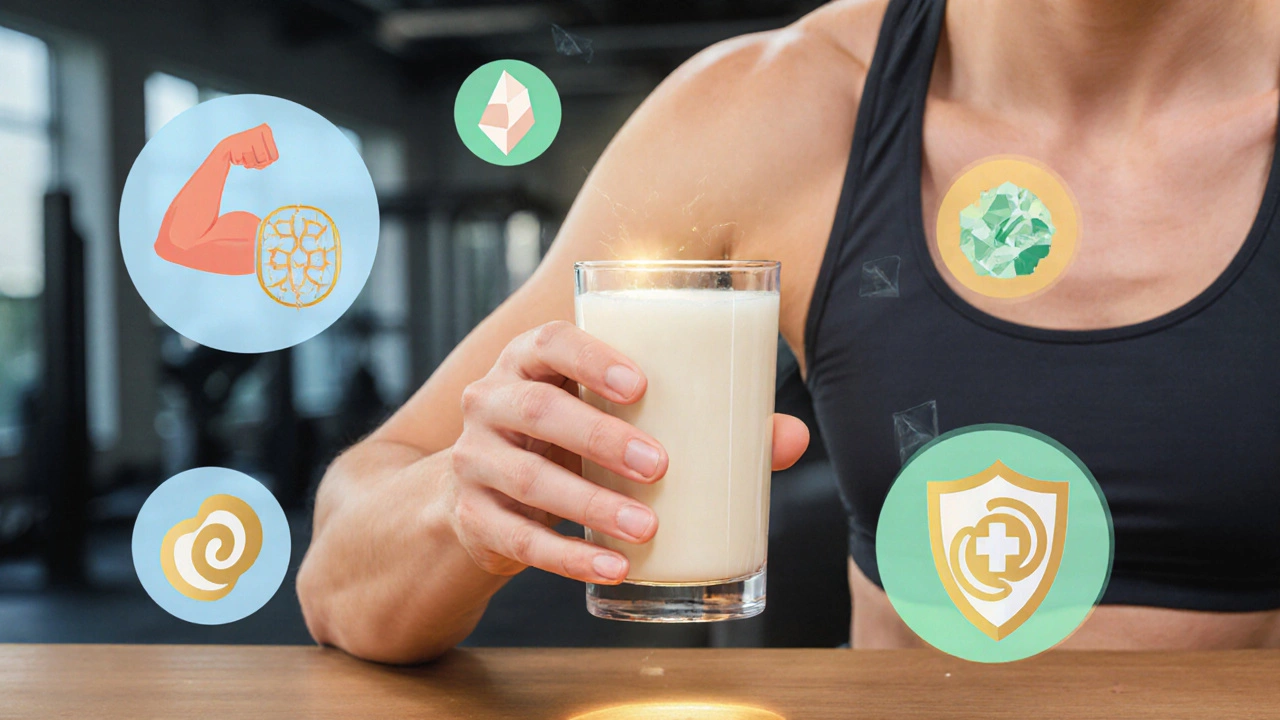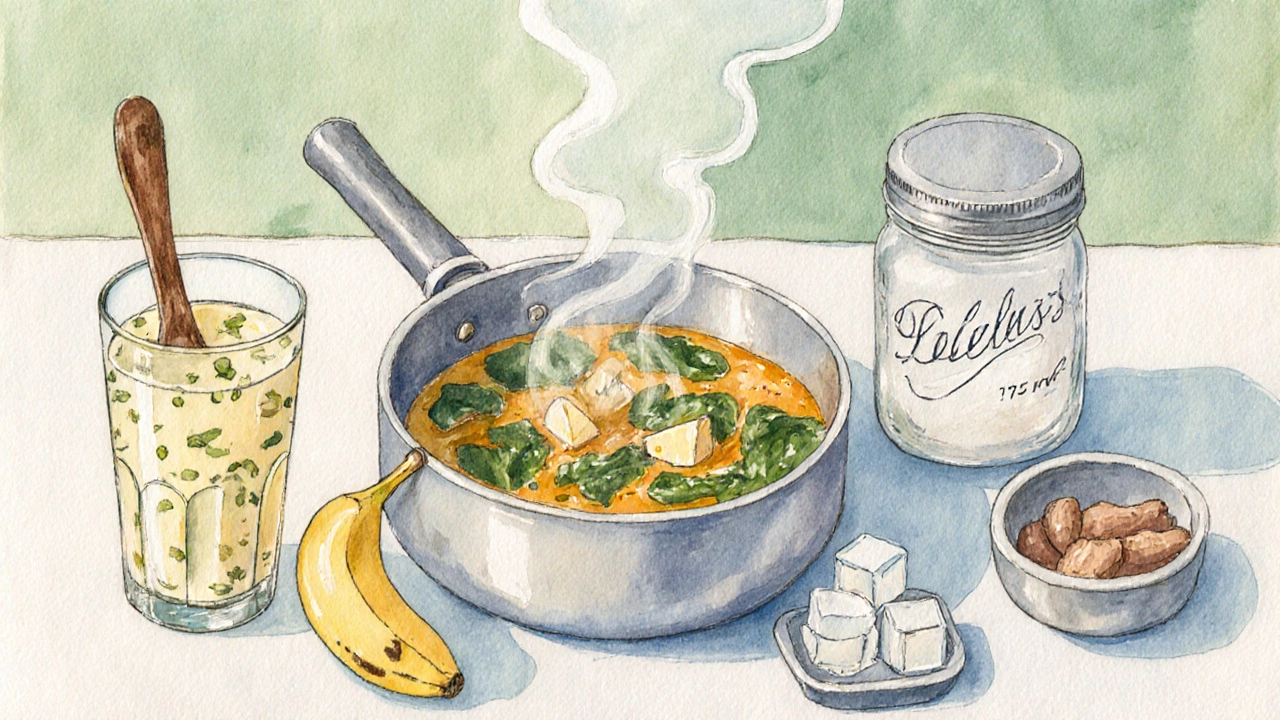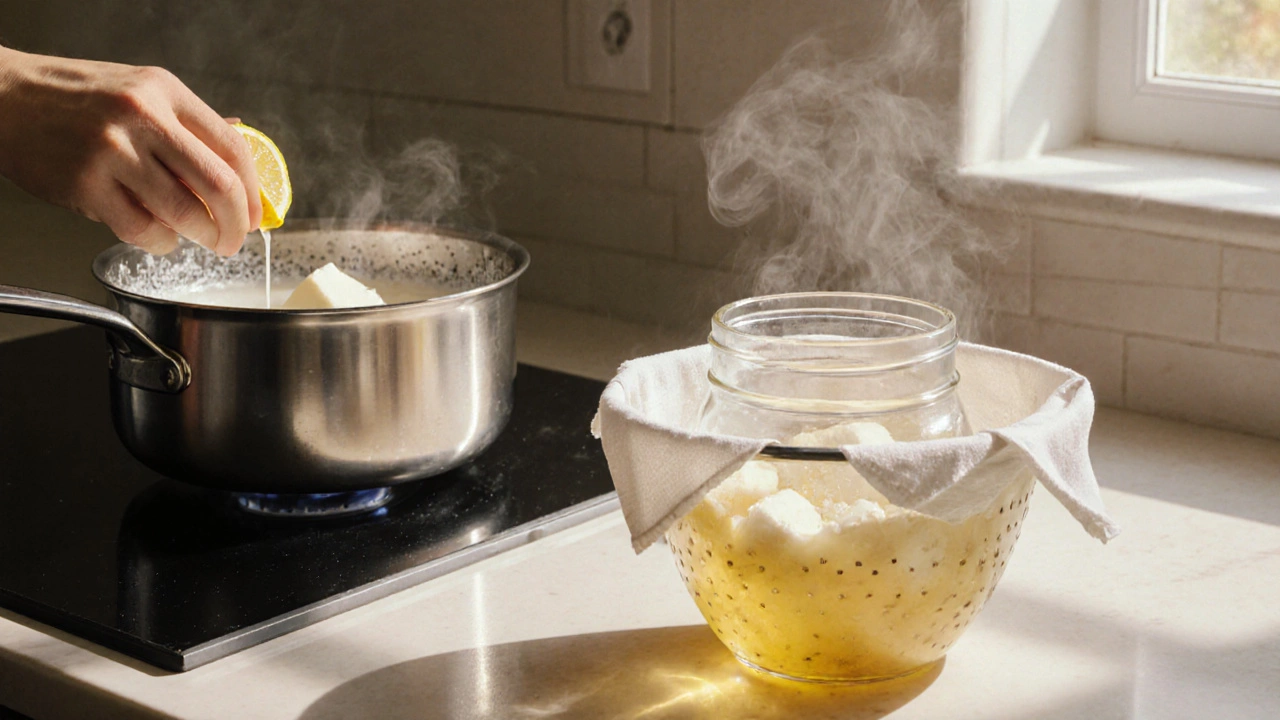11 Oct 2025
- 0 Comments
Whey Consumption Calculator
Calculate your ideal whey consumption based on your individual needs. This tool helps you safely incorporate paneer whey into your diet while considering potential health factors.
Ever wondered whether that golden liquid you get when you press fresh paneer is safe to sip? The short answer is yes, you can drink it-provided you know what you’re putting into your body. Below we break down the nutrition, the upside, the possible downsides, and the best ways to enjoy whey from paneer without any guesswork.
What is whey from paneer?
When you strain freshly made paneer, the liquid left behind is whey - a thin, slightly yellowish fluid that contains milk proteins, lactose, minerals and a handful of vitamins, separated from curd during cheese making. In Indian kitchens, this by‑product is often discarded, but traditional diets have used it for centuries in soups, gravies and even as a drink.
Paneer itself is paneer - a fresh, non‑aged cheese made by coagulating milk with lemon juice, vinegar or citric acid, then pressing the curds to remove excess whey. The process splits milk into two main protein families: casein (the solid curd) and whey (the liquid).
Nutritional profile of paneer whey
Compared with regular milk, whey from paneer is concentrated in a few key nutrients:
- Protein - high‑quality, fast‑digesting whey proteins such as beta‑lactoglobulin and alpha‑lactalbumin, delivering roughly 3-5g per 100ml
- Lactose - a natural milk sugar, typically 4-6g per 100ml, which can be a concern for lactose‑intolerant individuals
- Calcium - about 30mg per 100ml, supporting bone health
- Probiotics - if the whey is sourced from cultured milk, it can contain beneficial bacteria that aid gut health
- Vitamins B‑complex (especially B2 and B12) in modest amounts
The exact numbers shift based on the milk’s fat content, the coagulant used, and how long the whey is left to settle.
Health benefits of drinking whey
Because whey is rich in fast‑absorbing proteins, it’s a favorite among athletes and anyone looking to boost muscle recovery. Here are the main perks:
- Muscle growth and repair: The branched‑chain amino acids (leucine, isoleucine, valine) in whey trigger protein synthesis within 30 minutes of consumption.
- Weight management: A protein‑rich drink can increase satiety, helping you feel full longer and potentially curbing late‑night snacking.
- Gut health: When the whey contains live cultures, it can improve digestion and support a balanced microbiome.
- Bone density: Calcium and phosphorous work together to strengthen bones, especially useful for veg‑friendly diets that lack dairy.
- Immune support: Whey proteins like lactoferrin have antimicrobial properties that may aid the immune system.
All these benefits hinge on consuming whey in moderation and ensuring it’s clean.

Potential risks and who should avoid it
Even a wholesome liquid can pose problems for certain groups:
- Lactose intolerance - People who lack lactase enzyme may experience bloating, gas or diarrhea after drinking whey. If you’re unsure, start with a small 30ml sip and see how you feel.
- Kidney disease - High protein loads can strain compromised kidneys; consult a nephrologist before making whey a regular habit.
- Allergies to milk proteins (casein or whey) require complete avoidance.
- Contamination risk: If the whey is left at room temperature for too long, harmful bacteria may proliferate. Always refrigerate promptly.
How to collect and store whey safely
Follow these steps to get a clean, safe batch:
- Heat 1L of full‑fat milk to about 85°C (185°F). Stir occasionally to prevent scorching.
- Add a acid (1tbsp lemon juice or 1tsp vinegar) and stir gently. The milk will split into curds (paneer) and liquid (whey).
- Line a colander with a clean cheesecloth and pour the mixture through. Gather the corners of the cloth and press lightly to extract excess whey.
- Collect the whey in a sterilized glass jar. Let it cool to room temperature, then seal and refrigerate. It stays fresh for 3-5days.
- If you prefer a longer shelf life, freeze the whey in ice‑cube trays; each cube is about 30ml and can be thawed for smoothies.
For an extra safety net, you can pasteurize the whey after collection by heating it to 72°C (161°F) for 15seconds, then cooling quickly.
Ways to enjoy whey from paneer
Here are some tasty, low‑effort ideas:
- Morning shake: Blend 200ml whey with a banana, a handful of spinach, and a drizzle of honey.
- Protein‑rich soup: Stir whey into dal or lentil soup in the last five minutes of cooking for a creamy texture.
- Fermented drink: Add a pinch of jaggery and a splash of ginger juice, let it sit for a few hours, then sip as a probiotic tonic.
- Cooking aid: Replace part of the water in rice or quinoa cooking liquid with whey for extra protein.
Remember, the flavor is mildly sweet and a bit tangy, so it blends well with both sweet and savory dishes.

Comparison: Paneer whey vs. Commercial whey protein vs. Milk whey
| Attribute | Paneer whey (homemade) | Commercial whey protein (isolates) | Milk whey (raw) |
|---|---|---|---|
| Protein (g/100ml) | 3-5 | 80-90 (concentrated powder) | 2-4 |
| Lactose (g/100ml) | 4-6 | 0-1 (isolates) | 4-5 |
| Calcium (mg/100ml) | 30 | 10-15 | 25 |
| Cost (per litre) | Low - only milk cost | High - $30-$40 | Medium - $5-$8 |
| Flavor | Lightly sweet, milky | Varies (chocolate, vanilla) | Mild, slightly tangy |
| Convenience | Requires making paneer | Ready‑to‑mix powder | Needs separation step |
If you’re after a natural, low‑cost option and don’t mind a bit of prep, whey from paneer checks the box. For athletes needing a high‑protein, low‑lactose formula, commercial isolates are better.
Quick checklist - Do’s and Don’ts
- Do keep whey refrigerated and use within 5days.
- Do start with small portions if you’re lactose sensitive.
- Do pasteurize if you plan to store it longer than 24hours at room temp.
- Don’t drink whey that smells sour beyond the usual mild tang.
- Don’t add sugar or artificial flavors if you’re using it for health benefits.
- Don’t replace all your fluid intake with whey; stay hydrated with water too.
Frequently Asked Questions
Is paneer whey the same as whey protein powder?
No. Paneer whey is a natural by‑product containing a mix of proteins, lactose, and minerals, while whey protein powder is a processed isolate that usually removes most lactose and fat to deliver a higher protein concentration.
Can I drink paneer whey daily?
Yes, as long as you’re not lactose intolerant or dealing with kidney issues. A cup (250ml) a day fits well into most balanced diets.
How long does homemade whey stay fresh?
Stored in a sealed container in the fridge, it’s best used within 3-5days. Freeze for longer storage.
Will drinking whey help me lose weight?
Protein increases satiety, so swapping a sugary snack for a whey‑based drink can reduce overall calorie intake. Combined with a balanced diet and exercise, it can support weight loss.
Is the whey from low‑fat milk less nutritious?
Low‑fat milk yields slightly less calcium and fat‑soluble vitamins, but the protein and lactose levels stay similar. Choose the milk type based on your dietary goals.
